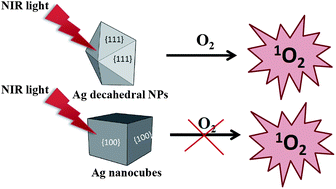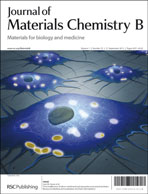Singlet oxygen is a very important reactive oxygen species (ROS) involved in peroxidation of olefins and polymers, as well as in clinical photodynamic therapy treatments of tumors. Previously, it was reported that singlet oxygen can be formed via sensitization by spherical metal nanoparticles upon photo-excitation of the surface plasmon resonance (SPR) bands. In this paper, we report that sensitization and formation of singlet O2 is strongly dependent on the morphologies of gold and silver nanostructures. For example, singlet O2 can be generated via photo-irradiation and sensitization of silver decahedrons and silver triangular nanoplates, but not by silver nanocubes and gold decahedrons. The sensitization patterns of silver and gold nanoparticles are the reverse of each other. In the case of gold nanorods, singlet O2 can be generated via photo-excitation at the longitudinal SPR band, but not by excitation at the transverse SPR band. The controlling factors for such a morphology dependent singlet O2 sensitization will be discussed. Furthermore, we also demonstrate in vitro morphology dependent sensitization behaviour of silver nanoparticles in the photodynamic cancer treatment. Our results indicate that metal nanoparticles with certain morphologies are potentially very promising dual functional nanomaterials with capabilities of simultaneously serving as near infrared (NIR) activatable photodynamic therapy and photothermal therapy reagents for cancer treatments.

You have access to this article
 Please wait while we load your content...
Something went wrong. Try again?
Please wait while we load your content...
Something went wrong. Try again?


 Please wait while we load your content...
Please wait while we load your content...